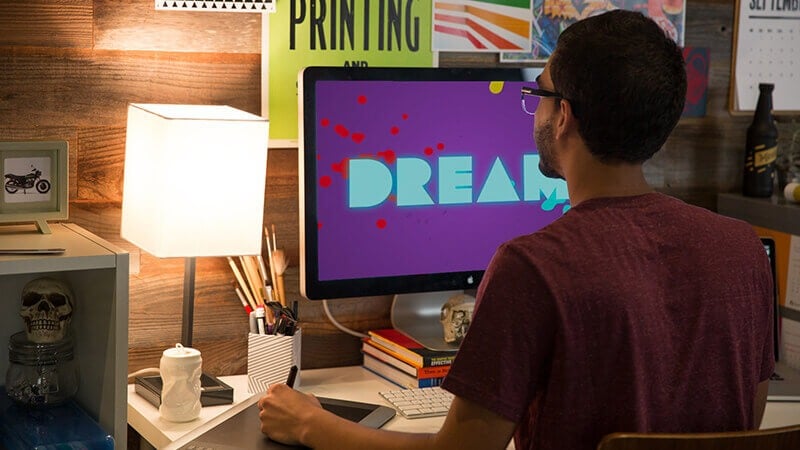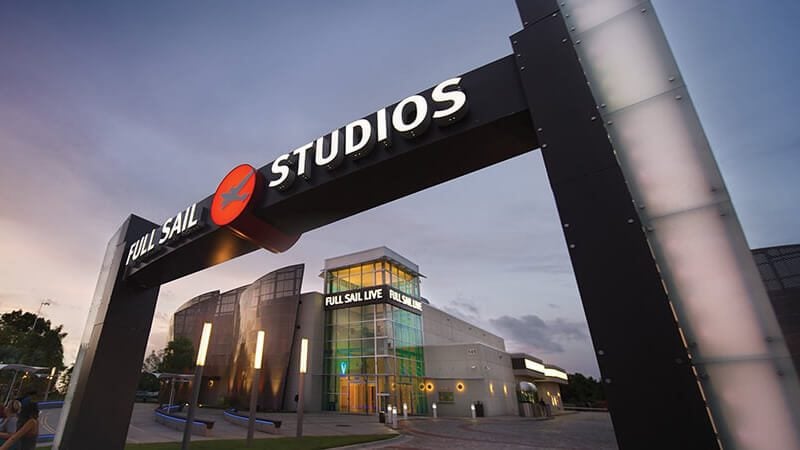Pro Advice
The Art of Digital Character Creation
In Pirates of the Caribbean: Dead Man’s Chest, the villainous Davy Jones slinks around deck as the captain of the ghost ship, the Flying Dutchman. His mannerisms and movements are so fluid – his beard of tentacles so detailed – that it’s incredible to think that he’s completely computer-generated. To get that finished product you see on the screen, dozens of character designers, modelers, riggers, simulators, and animators worked for months to bring Davy (and other characters) to life.
Full Sail Digital Media grad (and 6th Annual Hall of Fame inductee) Tim Naylor has been a part of the character creation process for the past 15 years, working at VFX houses like Digital Domain and Industrial Light & Magic before co-founding creature and character design firm, Creature Art & Mechanics. For the second Pirates installment, he worked as a Lead Creature Developer at ILM, and one of his main responsibilities was rigging Davy’s tentacles so that they were able to move the way they do.
So, how exactly do characters like Davy Jones get created?
It starts with a sketch – an artist’s rendering of what the character will look like on screen. Character modelers take that concept art and create the default model, which is both the surface of the character and the technical aspects that will explain how the character will move once its time for animation.
“The model is organized in terms of polygons and mesh,” says Tim, “And what [the modelers] create is going to help all the way down to when it’s time for the character to be rendered.”
As Davy gets modeled, the riggers get to work as well, which is where Tim comes in. A rigger’s main responsibility is to get the 3D-modeled character ready to move, and then deliver it to the animators.
“We basically will take that model as our starting platform and build the articulation engine that goes inside of it,” says Tim. “We lay out a skeleton – the character’s digital bones – that has different ranges of movement. Then, we attach the skin to those bones and make the flesh move, which is known as deforming. As riggers, we’re there to provide the tools that the animators need to get the shot across.”
The riggers use software to create controllers on the skeleton that will allow the animators to move the character around as naturally and realistically as possible. Depending on the studio, riggers also work to set up a character’s hair, clothing, and accessories. Tim spent months working on Davy’s tentacles, which was a challenge because each and every tentacle needed to be able to be chosen by animators to be key framed (or it would be simulated) so that it could move independently and express Davy’s emotions. On a trip to Japan before starting work on Pirates, Tim remembers exploring the fish market and taking photos of octopi moving around in the tanks for inspiration.
Once the character is rigged, animators then work keyframe by keyframe to put the character into different poses, and the movement starts to come from there. This doesn’t mean the modeler and riggers’ work is finished though. The model can change frequently, and as the movie is edited, the director may come back with changes that the VFX team will have to address. Tim and the rest of the team had worked to rig Davy’s tentacles so that they’d be able to wrap around things, but after a scene was added that involved Davy playing the organ, they had to go back and add new, more complicated rigs that allowed the tentacles to move in different directions. It’s a constantly evolving process that consistently changes all the way up to the end of production.
“The movies becomes a visual reference to your life for the past 18 or so months,” says Tim. “When I’m watching the movie, the natural memories of being on that show – the relationships and challenges, the stress and the happy times – all come back to you. You’re watching 18 months of your life in two hours.”
The Industrial Light & Magic team’s hard work was recognized: In 2007, Pirates of the Caribbean: Dead Man’s Chest won the Academy Award for Best Visual Effects.
Since then, the industry has continued to evolve and the audience demand for digital characters to be more complex and lifelike has made some of the software used on characters like Davy obsolete. At Creature Art & Mechanics, Tim works to design and develop tools and programming to create and augment software that can make the rigging and animation process more streamlined and efficient.
“The face [of a digital character] has been one of the primary driving forces for new technology,” says Tim. “You absolutely need to know how to take a believable performance that an actor is delivering and translate it into the character. If the face isn’t doing something right, you’ve totally removed the suspension of disbelief.”
So, next time you see a digital character on screen, give some props to the VFX team that spent hours poring over every tiny detail. It probably took a lot more work than you think.
Whether you’re ready to apply or just want to learn more about Full Sail University, our Admissions Representatives are here to help. Call us or request more information.
Keep Exploring
- Real-World Experience
- Scholarships
- Instructional Design & Technology
- Innovation & Entrepreneurship
- Image Gallery
- Sports Marketing & Media
- Facilities
- Scheduling
- Public Relations
- Emerging Technologies
- Alumni Updates
- I Made This
- All Access
- Expert Advice
- Career Development
- Behind the Scenes Tour
- Game Design
- Online
- For Parents
- Web Development
- Digital Marketing

